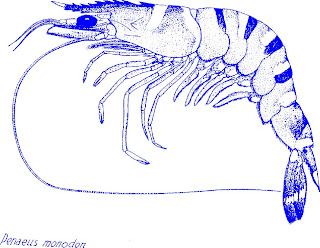
Five species of pandalid shrimp of various commercial and subsistence values are found in the cool waters off the coast of Alaska.
Pink shrimp (Pandalus borealis) are the foundation of the commercial trawl shrimp fishery in Alaska. Pinks are circumpolar in distribution, though greatest concentrations occur in the Gulf of Alaska.
Ranging from Puget Sound to the Arctic coast of Alaska, the humpy shrimp (P. goniurus) is usually harvested incidentally to pink shrimp.
In some cases, however, the humpy constitutes the primary species caught. Both pink and humpy shrimp are usually marketed as cocktail or salad shrimp. Known for its sweet flavor, the sidestripe shrimp (Pandalopsis dispar) is also caught incidentally to pinks; however, there are small trawl fisheries in Prince William Sound and Southeast Alaska which target on this deeper water species.
The coonstripe shrimp (Pandalus hypsinotis) is the prized target of various pot shrimp fisheries around the state.
Coonstripe shrimp can be found from the Bering Sea to the Strait of Juan de Fuca while sidestripes range from the Bering Sea to Oregon. Spot shrimp (P. platyceros) is the largest shrimp in the North Pacific.
Ranging from Unalaska Island to San Diego, this species is highly valued by commercial pot fishers and subsistence users alike.
Most of the catch from the sidestripe, coonstripe, and spot fisheries is sold fresh in both local and foreign markets.










